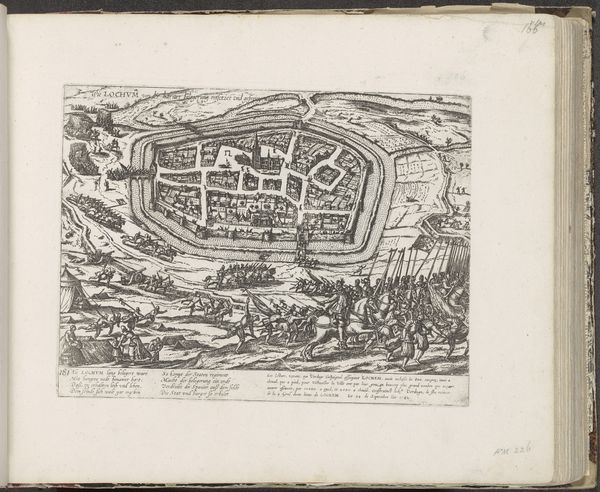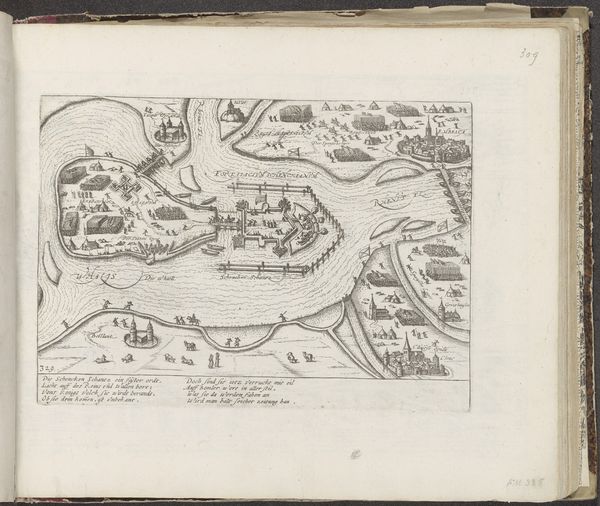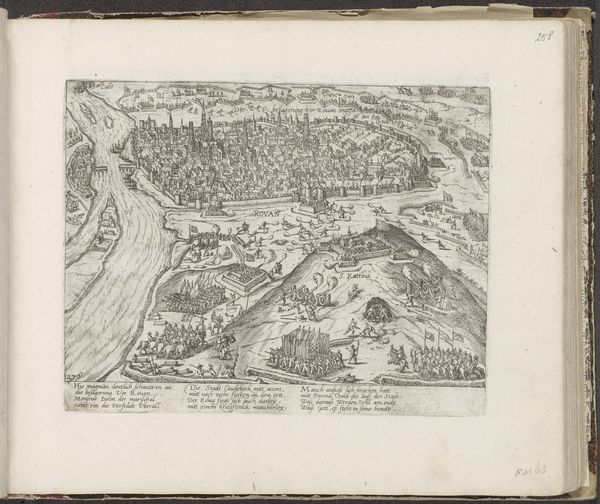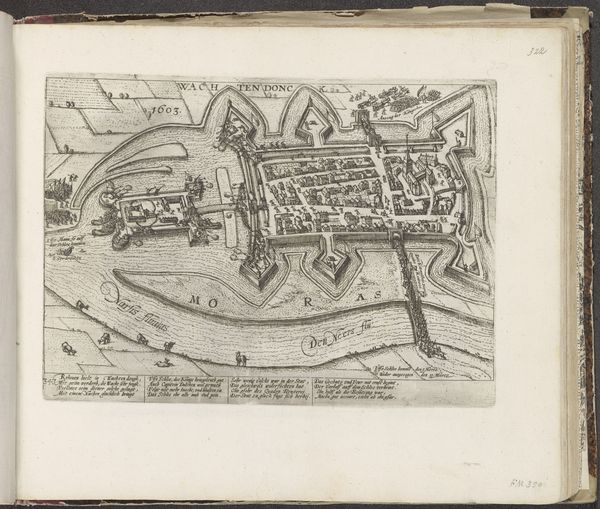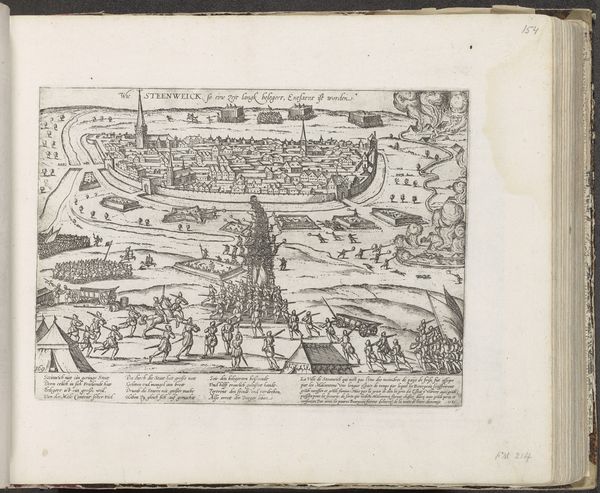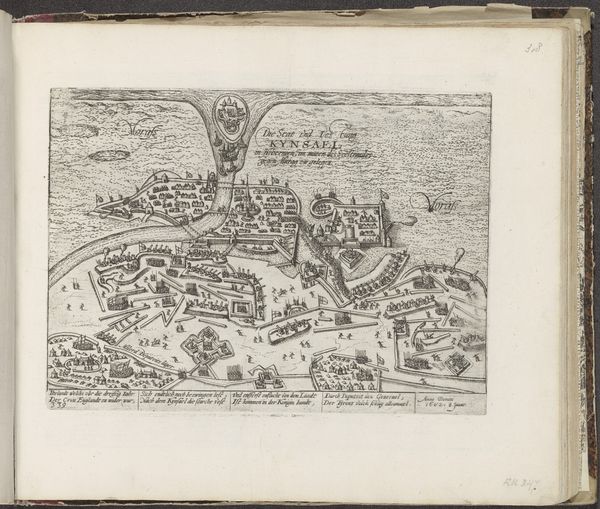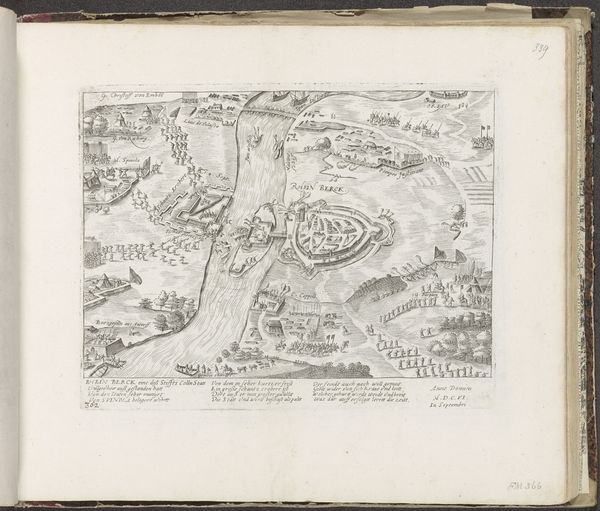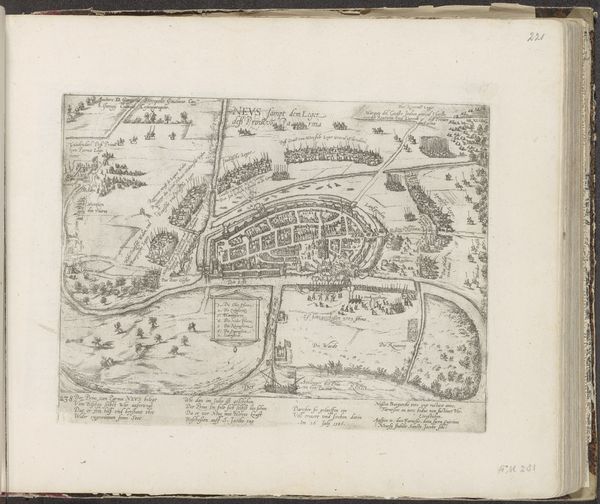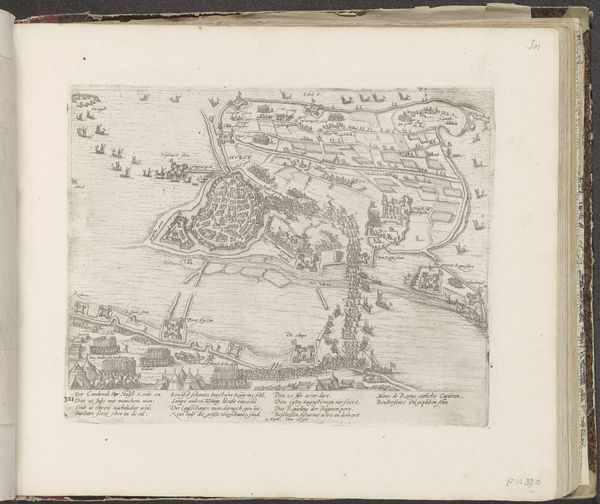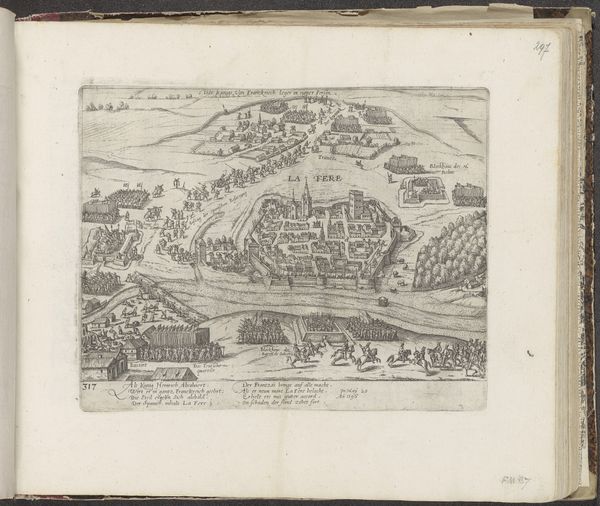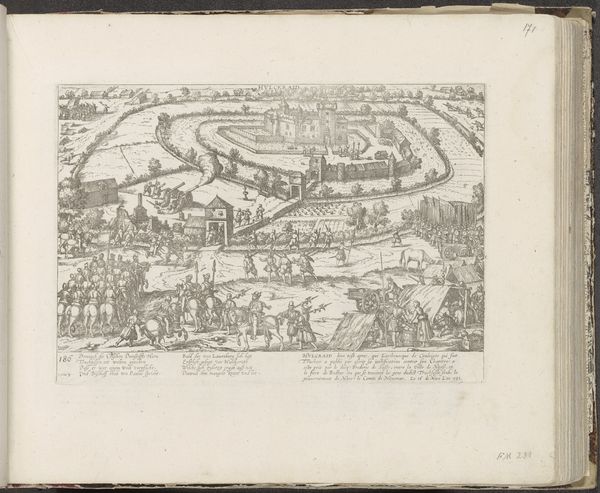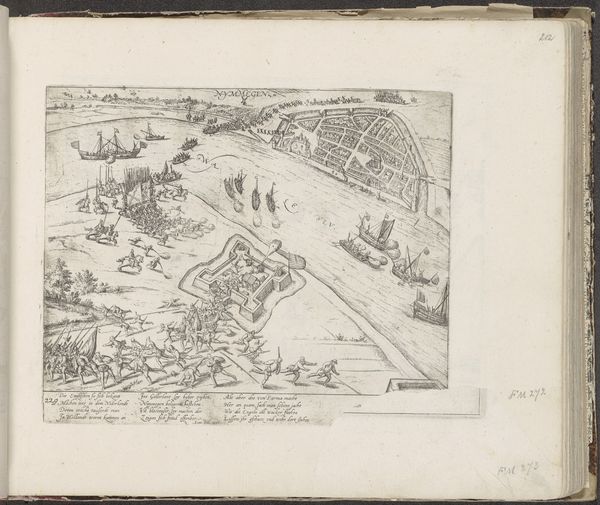
print, engraving
#
ink drawing
#
pen drawing
# print
#
figuration
#
11_renaissance
#
line
#
cityscape
#
history-painting
#
northern-renaissance
#
engraving
#
realism
Dimensions: height 215 mm, width 283 mm
Copyright: Rijks Museum: Open Domain
Editor: Here we have Frans Hogenberg's engraving, "Biron ontzet Dijon voor Hendrik IV, 1595," created sometime between 1595 and 1597. It depicts the siege of Dijon. It's incredibly detailed! The chaotic jumble of figures really strikes me. What are your initial thoughts when you look at this work? Curator: Considering Hogenberg's print, the real story lies in the process and context of its creation. It's more than just an image; it's a commodity, produced using engraving techniques - laborious work that involved carving into a metal plate. Editor: So you're saying it's important to understand how this image came into existence, physically? Curator: Precisely. Engravings like this were instrumental in disseminating information and propaganda during the Renaissance. The materiality of the print allows for mass production and wider accessibility of information, and hence, it fueled early forms of news and shaped public opinion. Who had access to the knowledge it contained? Editor: I hadn't considered it in terms of its accessibility to the masses. Curator: It prompts us to think about the social context of production. This isn't just about artistry; it's about labor, consumption, and the flow of information in the 16th century. The detailed depiction of Dijon speaks to a growing interest in accurate documentation, too, feeding the public's hunger for understanding contemporary events. Editor: So the artistic merit becomes secondary to the context and dissemination of the piece itself? It's fascinating to view it through that lens. I hadn't really appreciated that side of it. Curator: Exactly. It makes you consider art as something intrinsically bound to the means and relationships of production, not merely something beautiful. Editor: Thanks, that gives me a new perspective on appreciating early modern printmaking!
Comments
No comments
Be the first to comment and join the conversation on the ultimate creative platform.
